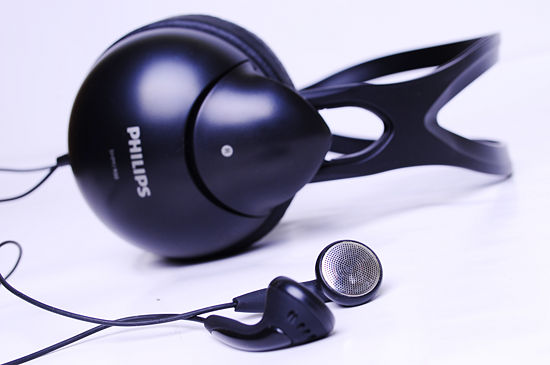How to Choose the Perfect Pair of Headphones
September 02,2013
From: ABC sources
-
With the right pair of headphones, you can experience music on a whole other level. Whether you're listening at home or on the go, consider investing in a high quality pair of headphones (or buds) for maximum enjoyment.When choosing earphones for your device, understanding of the specifications can help you to the pick earphones that will perform their best with your audio devices.
\r\n\r\n Decide between earbuds or headphones.\r\n
\r\n\r\n
\r\n \r\n
\r\n\r\n
\r\n
\r\n\r\n Earbuds\r\n
\r\nEarbuds and in-ear headphones are tiny earpieces that go inside your ears. You're probably familiar with these, as cheaper earbuds often come with music players (like the iPod). Earbuds generally sit in the bowls of your ears, while "in-ear" variants actually go in the ear canal, some fairly deeply.P
\r\n- \r\n
- \r\n Pros: Earbuds are super portable, which is nice if you're using them on-the-go. In-ear varieties also offer some isolation from outside noise, which is great on airplanes or loud buses. They're also more comfortable than over-the-ear headphones if you wear glasses or have ears that stick out like mine do.P\r\n \r\n
- \r\n Cons: While you can get some pretty decent in-ear headphones, you probably won't get the same sound quality that you would from an over-the-ear pair of headphones. Some people also find them less comfortable, because they're uncomfortable with putting things inside their ears. Comfort is mostly personal preference when it comes to earbuds. Lots of them are prone to falling out of your ears, too, so not every model is good for exercising.\r\n \r\n
\r\n Ear Pad Headphones\r\n
\r\n\r\n Headphones are great if you enjoy putting them around your neck while you're walking from one place to another, or if you just carry your headphones that way. You also tend to get beefier cords and fun options like wireless/bluetooth headphones. The drawback is that good headphones within your budget might be hard to find. They take up more space than earbuds, and the DJ-style headphones take up a ridiculous amount of space if you don't carry around a larger bag. They also are easy to get dirty because most don't come with cases for them.\r\n
\r\n\r\n
\r\n
\r\n- \r\n
- \r\n DJ-style headphones are just that. Huge, bulky, awesome-looking headphones that are reminiscent of what you'd see someone named Double D mix his jams with. The structure lends itself to good sound containment but bad size usage. And a lot of music buffs get them because of the better sound quality and less pressure exuded on the eardrum, resulting in longer listening time and less damage to the eardrum.\r\n \r\n
- \r\n Behind-the-neck headphones are exactly that as well, headphones with a connecting band that goes behind the neck instead of over the top of the head. This is recommended for joggers or people who wear hats a lot and also for sunglasses fanatics. Therefore, if you're a girl (or guy) with long hair, and you hate headphones that press your hair down or dislike headphones that irritate your ear piercings, this type would be a good choice. Besides that, there are very few things that separate them from DJ-style or "regular" headphones.\r\n \r\n
\r\n Earbuds and in-ear headphones tend to be better at sound isolation, due to the seal they provide in your ear; and the same with (huge) DJ-style headphones that create a little sealed environment around the ear.
\r\n\r\n How to Test Headphones\r\n
\r\n- \r\n
- \r\n While these are all good things to know on paper, you don't want to buy your headphones without testing them out first. You'll never know how well they fit, how well they actually isolate and cancel sound, or how comfortable they are just by looking them up online. Here are some tips for getting down into the nitty-gritty ofeach model.\r\n \r\n
\r\n Warnings\r\n
\r\n\r\n
- \r\n
- \r\n Investigate the frequency range. A wider frequency range means you can hear more from the music; large ranges such 10 Hz to 25,000 Hz will often be recommended - anything within that range will be fine.\r\n \r\n
- \r\n Be especially careful with noise-reduction headphones (headphones in general) while driving, riding a bike, or even walking in the streets. Besides the desired distraction music might provide, you may miss early warnings of upcoming danger.\r\n \r\n
- \r\n Some people do get headaches from heavy headphones. This might be caused by poor fit/construction to begin with or simply listening to music at too high a volume.\r\n \r\n
- \r\n It is generally unsafe to use headphones for a long time, as pressure waves travel directly to the eardrum, causing accumulative long-term hearing loss. Prudent volume and frequent rests are advisable.\r\n \r\n
\r\n
\r\nThis should be enough to get you started on your journey for the perfect pair of headphones.
\r\n
Related Articles
